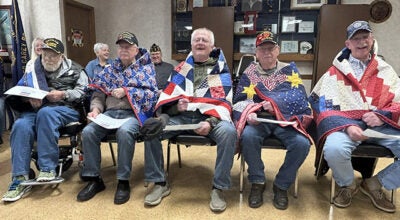Walk-in Access program starts soon for Minnesota hunters
Published 9:45 pm Tuesday, August 28, 2018
Beginning Saturday, hunters can access nearly 30,000 acres of private land across 47 counties in western and south-central Minnesota through the Walk-In Access program, according to a press release.
“Finding land for hunting can be challenging at times,” said Scott Roemhildt, regional director for the Minnesota Department of Natural Resources. “The Walk-In Access program allows hunters to access high-quality private land and makes it easier for landowners to allow that access.”
The Walk-In Access program pays landowners to allow hunter access. Hunters with a $3 Walk-In Access validation may hunt a half-hour before sunrise until a half-hour after sunset during open hunting seasons from Saturday to May 31. No additional landowner contact is necessary. More than 250 sites are available through the program. Bright yellow-green signs have been placed on Walk-In Access boundaries.
Hunting seasons open Saturday for mourning doves, crows, snipe, sora and Virginia rail. Hunting seasons open Sept. 15 for several small game species, including squirrels and rabbits. The Minnesota pheasant hunting season opens Oct. 13.
Maps of all Walk-In Access sites are available electronically at mndnr.gov/walkin. Printed atlases can be found across the 47-county area at DNR license agents, DNR wildlife offices and county soil and water conservation district offices. Atlases are also available by calling the DNR Information Center at 888-646-6367.
“Walk-In Access works because hunters respect the land, and that respect encourages landowners to enroll their land,” Roemhildt said. “We have grown the program because of the respectful relationship our hunters and landowners have enjoyed.”
Parcels enrolled in the Walk-In Access program must be at least 40 acres in size with high quality cover. Most land is also enrolled in private land conservation programs.
The Walk-In Access program began in 2011 and is funded with a grant from the Natural Resources Conservation Service of the U.S. Department of Agriculture. Other funding sources come through a surcharge on nonresident hunting licenses, a one-time appropriation from the Minnesota Legislature in 2012, and donations from hunters. The availability of funding sources will determine the future of this program.


